In today’s rapidly evolving knowledge economy, university-industry collaboration has emerged as a powerful catalyst for innovation and economic growth. When academic institutions join forces with businesses, they create a dynamic ecosystem where theoretical knowledge meets practical application, driving technological advancement and societal progress. These partnerships bridge the gap between classroom learning and real-world challenges, enabling students to gain hands-on experience while helping companies access cutting-edge research and fresh talent. Through shared resources, expertise, and facilities, universities and industries are building sustainable frameworks for mutual growth, fostering entrepreneurship, and accelerating the commercialization of groundbreaking discoveries. Whether through joint research projects, internship programs, or technology transfer initiatives, these collaborations are reshaping the landscape of education and business, creating a win-win situation that propels both sectors forward while contributing to regional economic development and global competitiveness.
Real-World Research That Shapes Your Park Experience
From Laboratory to Trail
Research partnerships between universities and Ontario Parks have revolutionized how we experience trails and facilities across the province. Take the innovative boardwalk design at Pinery Provincial Park, developed through collaboration with Western University’s Engineering Department. Using recycled materials and advanced drainage systems, this project created more sustainable and accessible paths that better withstand seasonal changes.
At Algonquin Provincial Park, researchers from the University of Waterloo helped develop smart trail markers that provide real-time updates on trail conditions and wildlife sightings through a mobile app. This technology not only enhances visitor safety but also helps park staff manage trail maintenance more effectively.
Queen’s University’s involvement in designing eco-friendly washroom facilities has been another game-changer. Their solar-powered composting system, now implemented at several backcountry locations, significantly reduces environmental impact while improving visitor comfort.
These collaborative projects showcase how academic expertise transforms into practical solutions that enhance both visitor experience and environmental conservation. The next time you’re enjoying a smooth trail surface or using a solar-powered facility, remember it’s likely the result of university minds meeting park needs.
Student Innovation in Action
Students are at the forefront of developing innovative solutions that enhance visitor experiences in Ontario’s parks and tourism destinations. At Waterloo University, a team of computer science students created a mobile app that helps visitors identify local plant species and learn about their ecological significance through augmented reality. Meanwhile, Ryerson University’s tourism management students designed an inclusive trail mapping system that makes outdoor adventures more accessible for visitors with mobility challenges.
At Queen’s University, engineering students developed solar-powered information kiosks that provide real-time updates on trail conditions and wildlife sightings. These eco-friendly installations have been successfully piloted at several provincial parks. Toronto Metropolitan University’s environmental science students initiated a citizen science program where visitors contribute to biodiversity monitoring while enjoying their outdoor experiences.
These student-led innovations not only improve visitor experiences but also provide valuable real-world experience for future industry leaders. Many of these projects have been implemented permanently, demonstrating how fresh perspectives from students can transform traditional tourism practices into more engaging, accessible, and sustainable experiences.
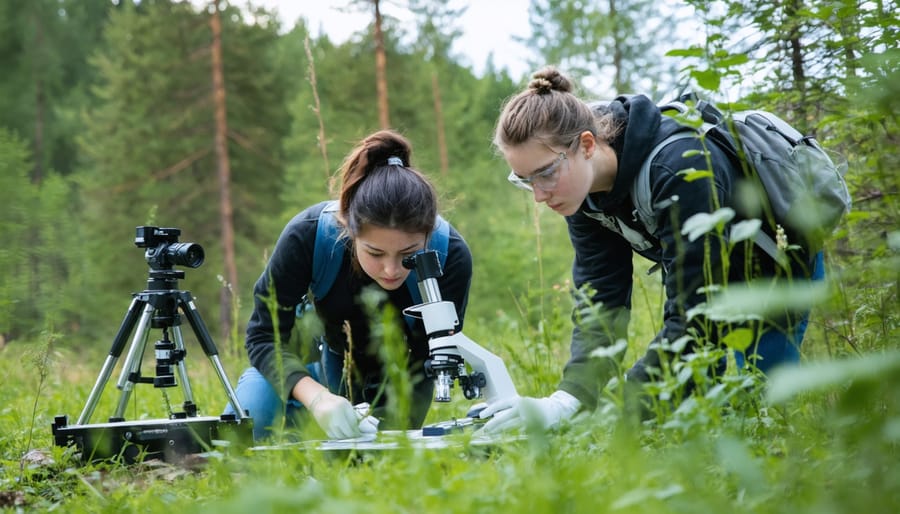
Conservation Meets Education
Learning in Nature’s Classroom
Nature becomes the ultimate classroom when universities and parks join forces to create hands-on learning experiences. Students from various disciplines get the chance to participate in real-world research projects, gaining invaluable experience while contributing to sustainable park management practices.
Picture biology students conducting wildlife surveys alongside seasoned park naturalists, or tourism management majors developing visitor engagement strategies with park staff. These collaborations create win-win situations where students apply theoretical knowledge to practical challenges while parks benefit from fresh perspectives and innovative solutions.
Summer internship programs are particularly popular, offering students the opportunity to work directly with park rangers and researchers. From tracking species populations to analyzing visitor behavior patterns, these hands-on experiences provide invaluable career preparation. Many students who participate in these programs go on to become environmental educators, conservation specialists, or park managers themselves.
The partnership between universities and parks also extends to research opportunities. Graduate students often conduct their thesis work within park boundaries, contributing to our understanding of ecosystem management, visitor experience, and conservation strategies. These research projects frequently lead to improvements in park operations and visitor services, making them valuable for both academic advancement and practical application.
Visitor Programs That Make a Difference
In Ontario’s parks, innovative visitor programs are transforming how universities and industry partners collaborate to enhance the guest experience. Through carefully designed educational programs for visitors, park guests can now engage with cutting-edge research while enjoying their outdoor adventures.
One standout initiative is the Citizen Science Program, where visitors work alongside university researchers to collect valuable data about local wildlife and plant species. Families can participate in guided nature walks led by graduate students, turning a regular hike into an interactive learning experience.
The popular “Research in Action” demonstrations bring university labs right into the park setting. Visitors can watch real-time water quality testing, learn about wildlife tracking techniques, or participate in archaeological digs under expert guidance. These hands-on experiences make complex scientific concepts accessible and engaging for all ages.
Technology plays a key role too, with mobile apps developed through university-industry partnerships helping visitors identify plants, track wildlife sightings, and navigate trails more effectively. These digital tools enhance the park experience while contributing to important research databases.
For the little ones, specially designed junior researcher programs offer fun activities that spark early interest in environmental science and conservation. These programs often become the highlight of family visits, creating lasting memories while fostering environmental awareness.
Technology and Tradition
Smart Parks Initiative
Ontario’s parks are becoming smarter thanks to innovative collaborations between universities and park management teams. These partnerships have led to the development of interactive mobile apps that help visitors identify flora and fauna, virtual reality experiences that showcase seasonal changes, and AI-powered wildlife monitoring systems that protect both animals and guests.
One standout example is the smart trail mapping system, which combines GPS technology with real-time crowd monitoring to help visitors discover less-traveled paths during peak seasons. This not only enhances the visitor experience but also helps preserve sensitive ecological areas by preventing overuse.
Digital information kiosks, powered by renewable energy, now offer multilingual guides and accessibility features, making parks more welcoming to diverse visitors. These smart solutions include augmented reality displays that reveal historical information about geological formations and indigenous heritage sites, creating deeper connections between visitors and the natural environment.
Park managers can now make data-driven decisions about trail maintenance and facility improvements, thanks to smart sensors that track usage patterns and environmental conditions. This technology ensures that conservation efforts work hand-in-hand with visitor enjoyment, creating a sustainable model for future park management.
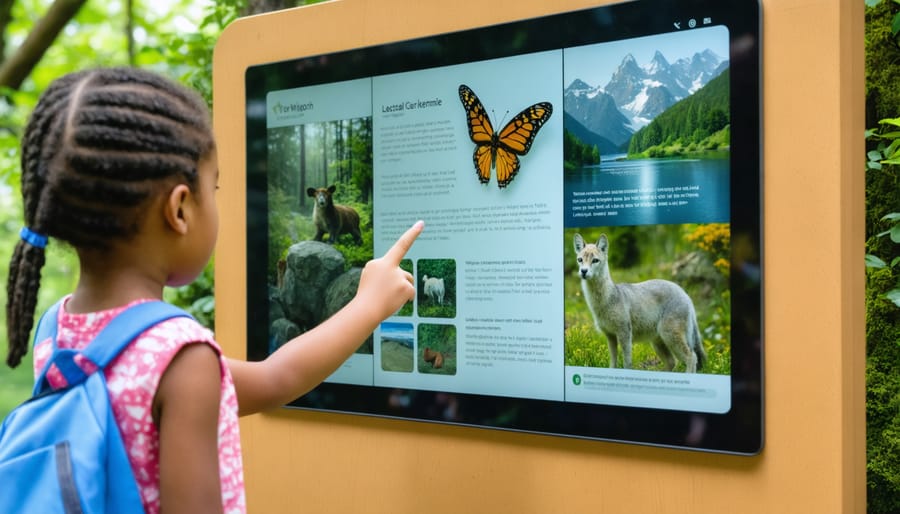
Traditional Knowledge Integration
Universities play a vital role in helping Ontario Parks preserve and share indigenous knowledge through meaningful partnerships with First Nations communities. These collaborations ensure that Ontario’s living heritage is authentically represented and respectfully integrated into visitor experiences.
Local universities work with indigenous elders and knowledge keepers to develop interpretive programs that share traditional stories, medicinal plant uses, and sustainable land management practices. For instance, Algonquin Provincial Park partners with nearby universities to create guided walks where visitors learn about traditional plant harvesting and the spiritual significance of local landmarks.
These partnerships also help document and preserve indigenous languages through interpretive signage and educational materials. Students and researchers work alongside community members to record oral histories and traditional ecological knowledge, ensuring these valuable insights are passed on to future generations.
The collaboration extends to training park staff in cultural sensitivity and indigenous protocols, creating more meaningful connections between visitors and the land’s original stewards. This knowledge integration enriches the park experience while fostering greater understanding and respect for indigenous perspectives on conservation.
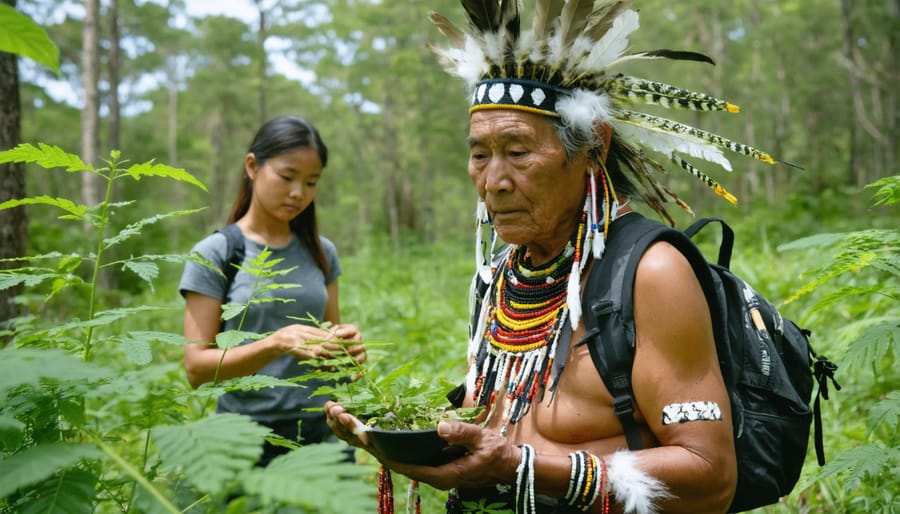
Future Adventures in the Making
The future of university-industry collaboration in Ontario’s tourism sector is shaping up to be more exciting than ever. Several groundbreaking projects are currently in development, promising to revolutionize how visitors experience our natural spaces and cultural attractions.
One of the most anticipated initiatives is the “Smart Trails” project, a partnership between the University of Waterloo and Ontario Parks. This innovative program will use AI-powered sensors to monitor trail conditions in real-time, helping visitors make informed decisions about their hiking plans while protecting sensitive ecosystems.
At Queen’s University, researchers are working with local tour operators to develop augmented reality experiences that will bring historical sites to life. Imagine pointing your phone at a historic building and seeing it transform into its original appearance, complete with characters from the past sharing their stories.
Algonquin College’s Tourism and Hospitality program is partnering with Indigenous communities to create immersive cultural experiences. These collaborative projects will offer visitors authentic opportunities to learn about Indigenous traditions, stories, and ways of life while ensuring respectful and accurate representation.
Looking ahead to sustainable tourism, Ryerson University’s environmental science department is developing a visitor impact assessment tool in collaboration with several provincial parks. This technology will help park managers better understand and manage human impact on natural areas while enhancing visitor experiences.
These upcoming projects showcase how academic expertise and industry knowledge can combine to create more engaging, sustainable, and meaningful experiences for visitors. As these initiatives roll out over the next few years, they’ll not only enhance tourism offerings but also set new standards for responsible travel and cultural appreciation.
The synergy between universities and the tourism industry has proven to be a game-changer for Ontario’s visitor experiences. These collaborations have created a ripple effect of benefits, from enhanced visitor services to groundbreaking sustainable tourism practices. By combining academic research with real-world applications, we’ve seen the development of innovative visitor programs that better serve diverse tourist needs while preserving our natural landscapes.
Students and researchers working alongside industry professionals have brought fresh perspectives to long-standing challenges, resulting in more inclusive and accessible tourism experiences. The partnerships have also led to the creation of educational programs that prepare the next generation of tourism professionals, ensuring the industry remains dynamic and forward-thinking.
Perhaps most importantly, these collaborations have fostered a culture of continuous improvement and innovation in Ontario’s tourism sector. From developing eco-friendly visitor management systems to creating engaging interpretive programs, university-industry partnerships continue to shape how we experience and preserve our beautiful province.
As we look to the future, these collaborative efforts will remain crucial in adapting to changing visitor needs while maintaining the delicate balance between tourism growth and environmental conservation.






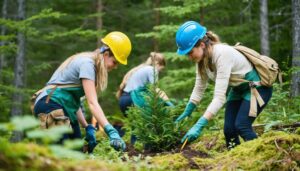


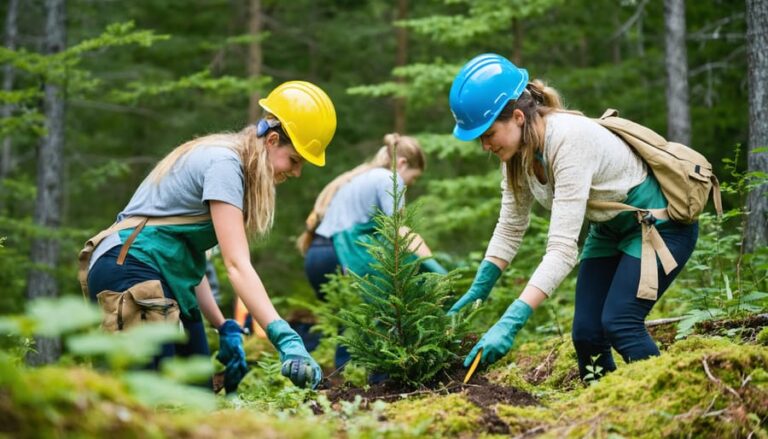
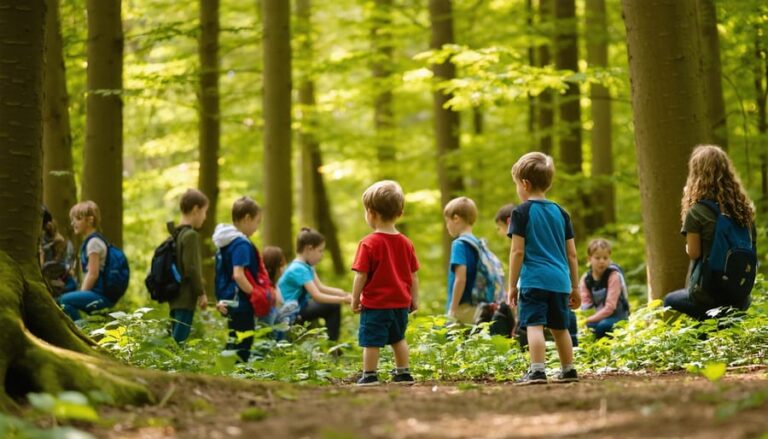

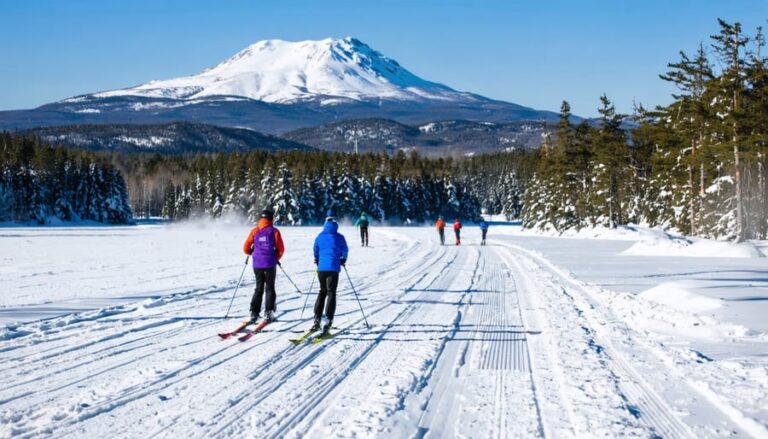

+ There are no comments
Add yours